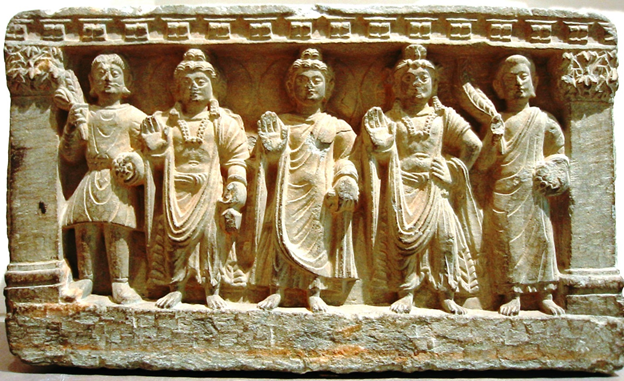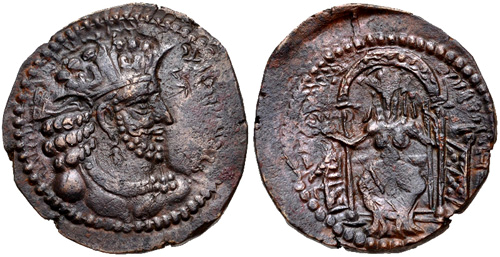As a refresher, the Kushans were Iranian nomads who settled in Bactria and, in the first century CE, built an empire that covered most of modern Afghanistan, Pakistan, and northern India. They were Buddhist and instrumental in guiding Buddhism into Central and East Asia. rh 13/
When Shapur conquered the Kushshahr (Afghanistan), these lands were not directly incorporated into the Sasanian Empire. Instead, you get a vassal kingdom we call the Kushano-Sasanians. Possibly members of the Sasanian family, but not entirely clear. rh 14/
Here’s a coin of the first known Kushano-Sasanian king, Ardashir Kushanshah. From the coin you get the sense this was a dynasty with a mixed identity. The portrait of Ardashir looks like a Sasanian coin, but the seated deity (maybe Anahit) is unique. rh 15/
Other coins show more explicit Kushan influences, even other coins of Ardashir, as pictured below. The Kushano-Sasanians presented themselves and were presented by the Sasanians and in other sources as their own entity. They were vassal kings. rh 16/
At times they fought. One of the equestrian reliefs of Bahram II (r. 274-293) at Naqsh-i Rustam shows him fighting his brother Hormozd I Kushanshah (bottom right) who may have revolted in an attempt to take the throne from Bahram (parts of this story are contested). rh 17/
So, we might want to include a proviso that some of these eastern territories were under vassal kings and weren’t directly under Sasanian authority… but, again, some of these vassal kings are presented as junior members of the Sasanian family. rh 18/
The Kushano-Sasanians last for about a century, maybe a little longer, before they were eliminated in the mid-4th century by a Hunnish invasion that resulted in the rise of two kingdoms, the Kidarites north of the Hindu Kush and the Alkhans to the south. rh 19/

 Read on Twitter
Read on Twitter





